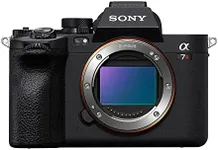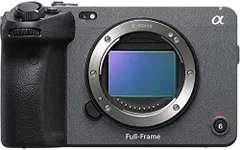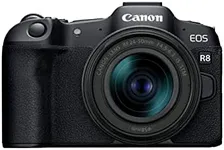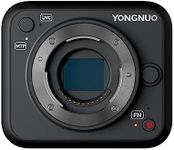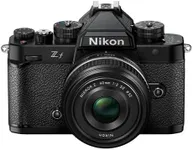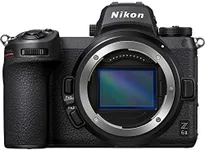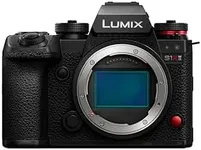Buying Guide for the Best Full Frame Mirrorless Cameras
Choosing the right full-frame mirrorless camera can be a daunting task, but with the right approach, you can find the perfect fit for your needs. Full-frame mirrorless cameras are known for their high image quality, compact size, and versatility. To make an informed decision, you should consider several key specifications that will impact your photography experience. Understanding these specs will help you match the camera to your specific needs, whether you're a professional photographer, an enthusiast, or a beginner looking to step up your game.Sensor ResolutionSensor resolution, measured in megapixels (MP), determines the amount of detail a camera can capture. Higher resolution sensors can produce larger prints and allow for more cropping without losing image quality. However, they also generate larger file sizes. If you primarily share images online or print small to medium-sized photos, a resolution of 20-30 MP is usually sufficient. For professional work or large prints, consider cameras with 40 MP or more.
Autofocus SystemThe autofocus (AF) system is crucial for capturing sharp images, especially in fast-paced or low-light situations. Modern mirrorless cameras offer advanced AF systems with numerous focus points and sophisticated tracking capabilities. If you shoot sports, wildlife, or action, look for a camera with a fast and accurate AF system, often indicated by a high number of focus points and features like eye-detection AF. For general photography, a reliable but less complex AF system will suffice.
Image StabilizationImage stabilization (IS) helps reduce blur caused by camera shake, allowing for sharper images in low light or when using longer focal lengths. In-body image stabilization (IBIS) is particularly beneficial as it works with any lens. If you often shoot handheld, in low light, or with telephoto lenses, a camera with IBIS can be very helpful. For tripod-based or studio work, IS is less critical.
Video CapabilitiesIf you plan to shoot video, consider the camera's video capabilities. Look for features like 4K or higher resolution, frame rates, and video-specific tools such as log profiles and external microphone inputs. For casual video recording, basic 4K at 30fps is usually enough. For more serious videography, look for advanced features like 4K at 60fps, 10-bit color depth, and good autofocus performance in video mode.
Electronic Viewfinder (EVF)The electronic viewfinder (EVF) allows you to see a digital preview of your shot, which can be very useful in bright conditions where the LCD screen might be hard to see. The resolution and refresh rate of the EVF are important for a clear and smooth viewing experience. Higher resolution EVFs provide a more detailed view, which is beneficial for precise focusing and composition. If you frequently shoot in bright light or need to check fine details, a high-quality EVF is essential.
Battery LifeBattery life is an important consideration, especially if you plan to shoot for extended periods or in remote locations where recharging isn't convenient. Mirrorless cameras typically have shorter battery life compared to DSLRs due to their electronic viewfinders and LCD screens. If you shoot long events or travel often, look for a camera with a longer battery life or consider carrying extra batteries. For casual or studio use, battery life is less of a concern.
Lens CompatibilityLens compatibility is crucial as it determines the range of lenses you can use with your camera. Full-frame mirrorless cameras often have their own dedicated lens mounts, but many can also use lenses from other systems with adapters. If you already own lenses, check if they are compatible with the camera you're considering. For those starting from scratch, look at the available lens lineup and future lens roadmap to ensure it meets your needs.
Build Quality and ErgonomicsBuild quality and ergonomics affect how comfortable and durable the camera is. Look for a camera with a solid build, weather sealing, and a comfortable grip. If you shoot in challenging environments or need a camera that can withstand rough handling, robust build quality is essential. Ergonomics are subjective, so it's a good idea to handle the camera in person to see how it feels in your hands and how intuitive the controls are.


